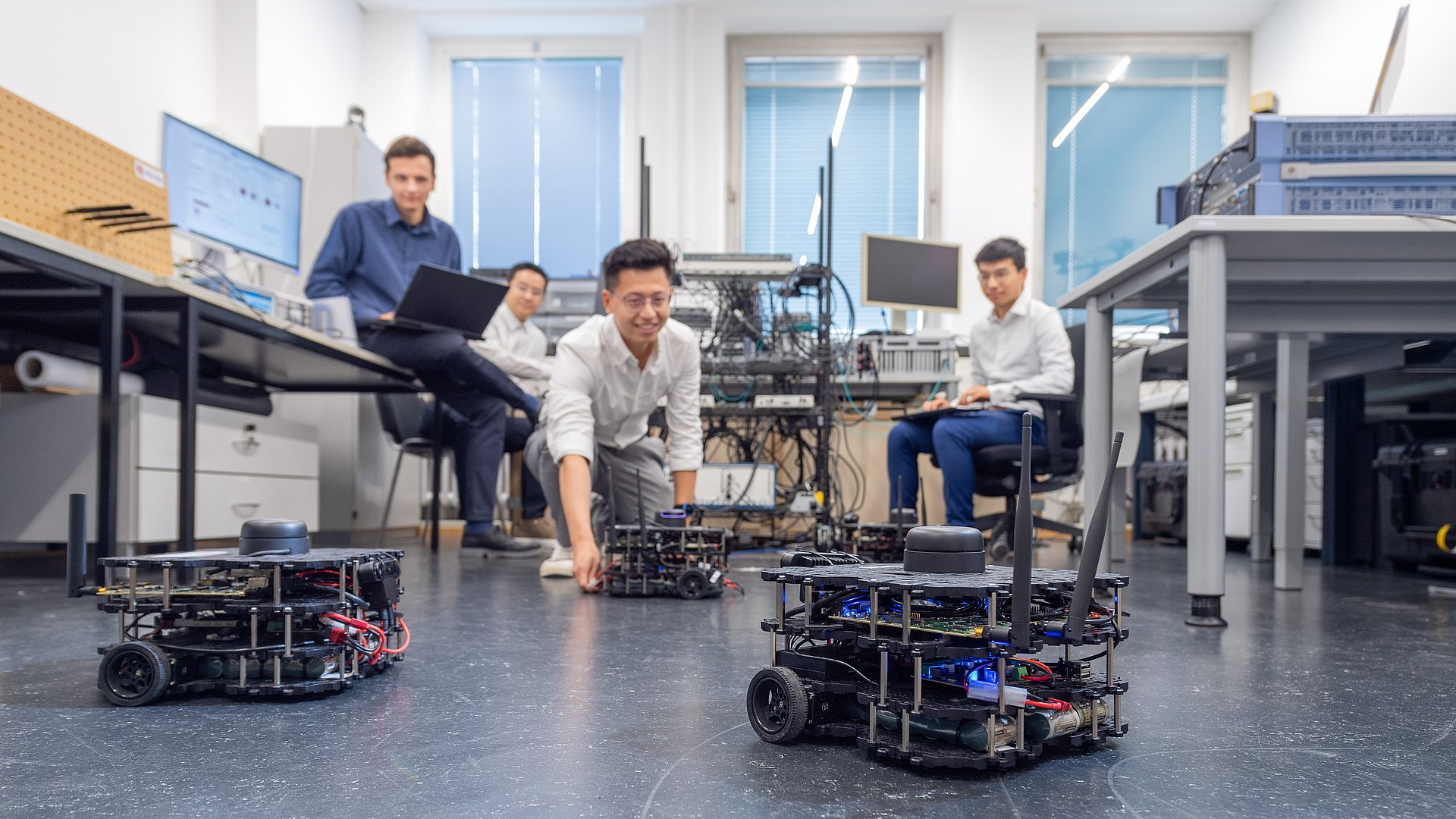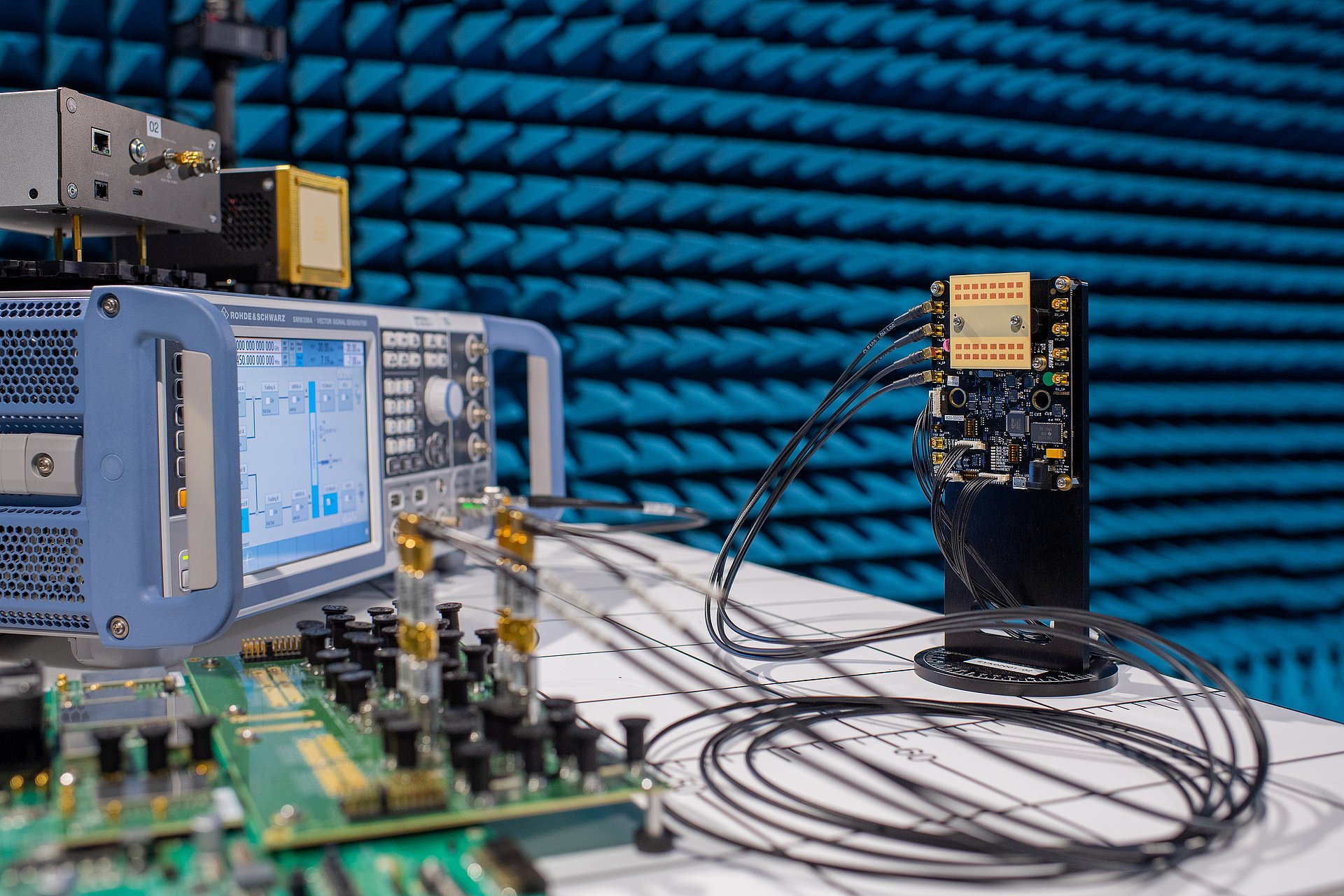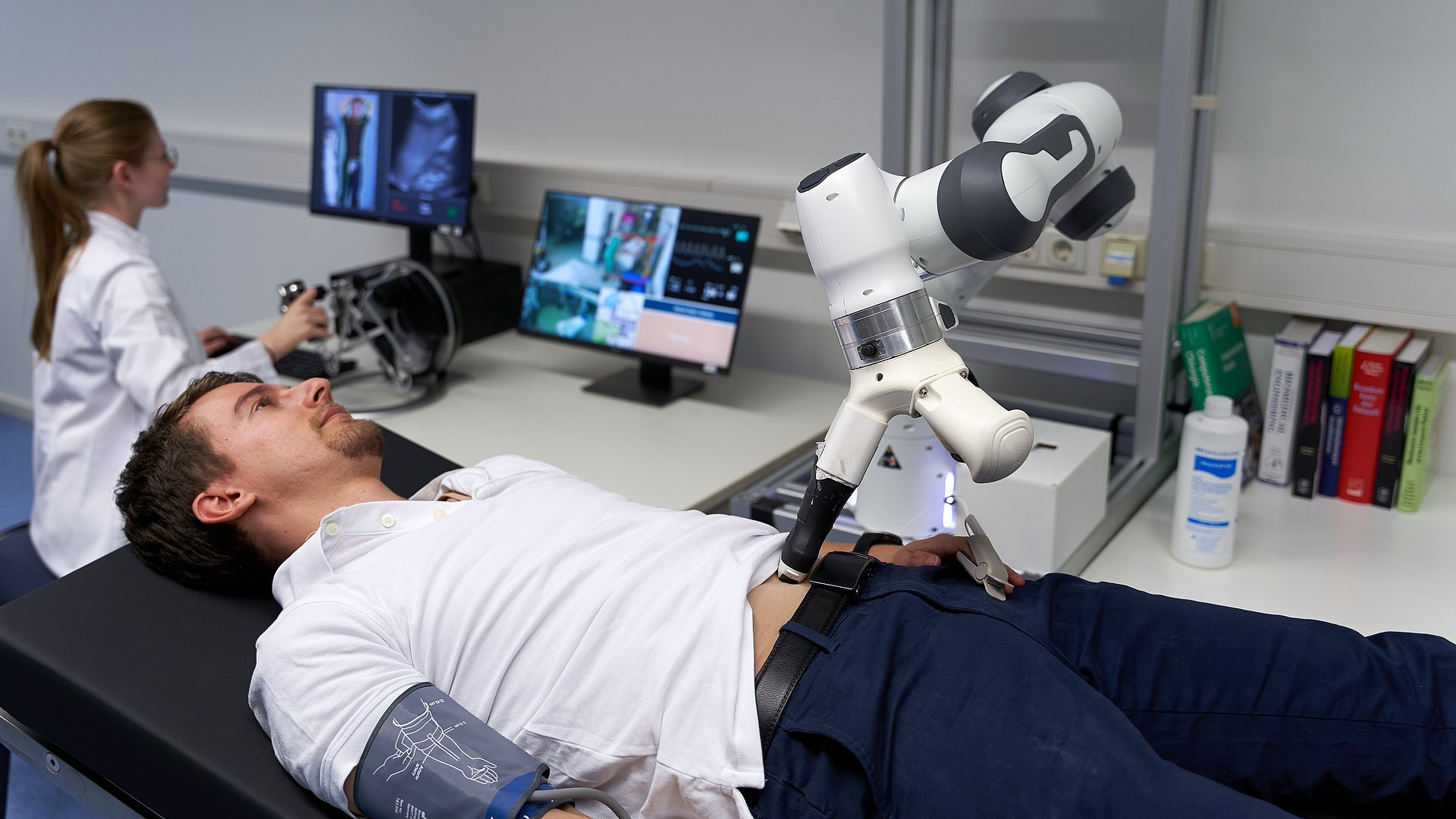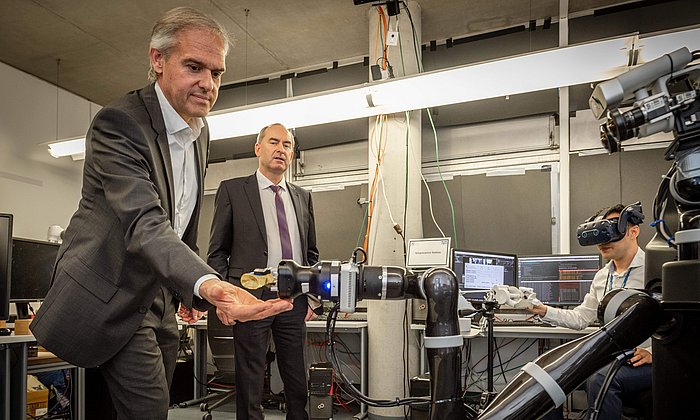Digital twins, interception-proof transmissions, telediagnostics
Current research on the new 6G mobile communications standard
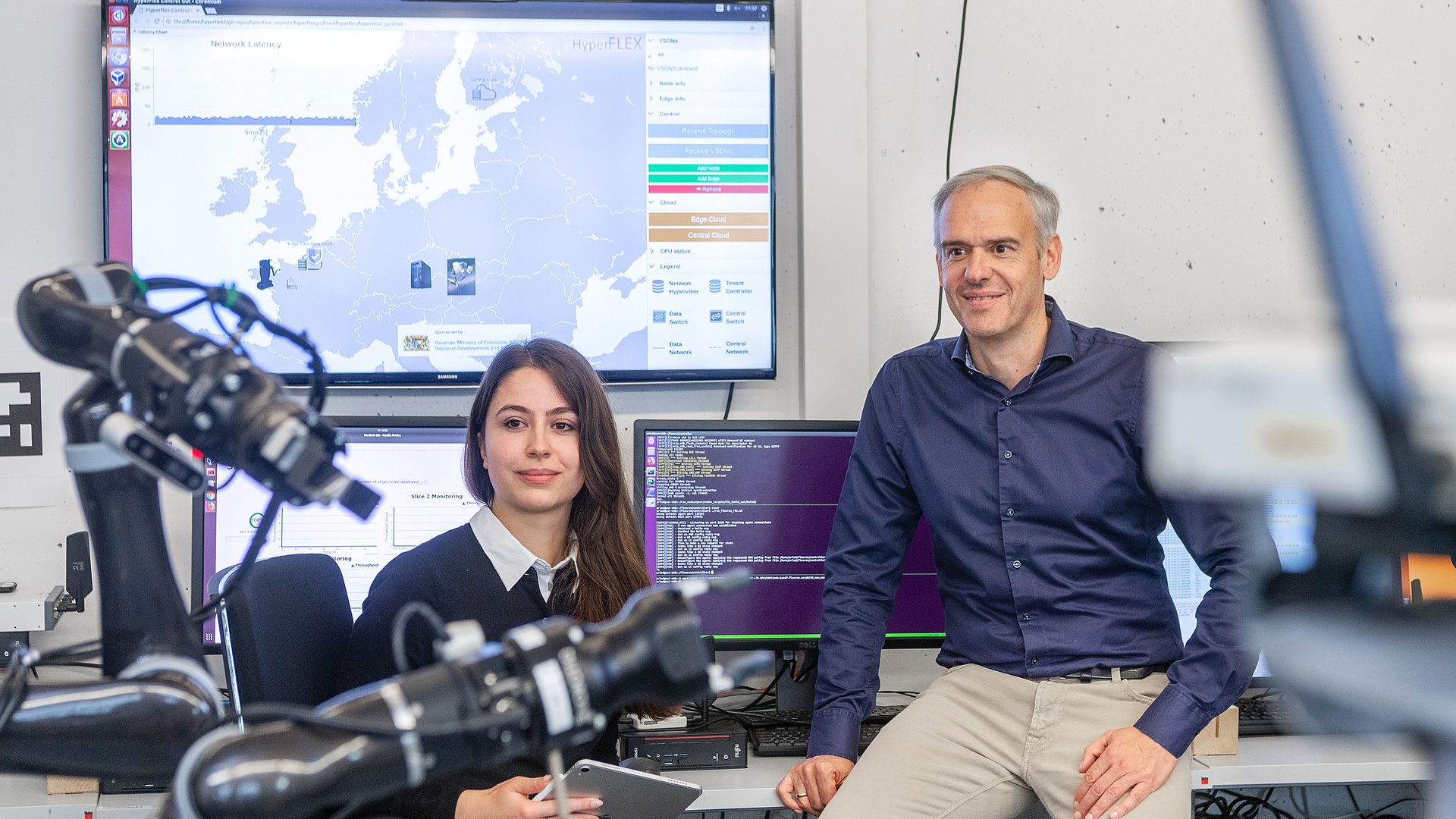
Whereas the 5G standard prioritizes communications between machines, 6G will place human beings and their communications and interactions with machines and virtual worlds in the foreground. The researchers at TUM and TU Dresden are engaging with four fundamental questions: How can communication become even faster? How can we protect the private sphere and defend against attacks? How can we make critical applications in industry and medicine as failsafe as possible? And how can we improve the sustainability of digital communications?
The goal of the projects 6G-life and 6G Future Lab Bavaria is to ensure that Germany plays a leading role in developing 6G technology. More than 30 research chairs at TUM are involved in these initiatives and are conducting research on various forward-looking topics:
Digital twins
What it's about: A digital twin is a virtual model of a communication device in real time.
Why it's important: Modern applications like those in industrial automation, healthcare technology or autonomous cars will function reliably in the 6G world only with continuous and stable connections. This requires the utmost reliability.
How it works: To transmit higher data rates, 6G works with higher frequencies. The higher the frequency, the harder it is for the signal to pass through such obstacles as walls or doors. To avoid latency in communications, devices need to switch quickly from one base station to the next. This is where the digital twin comes in: Through the continuous capture of surroundings by sensors placed either directly inside the communications device, the base stations or the surrounding area, a dynamically updated digital twin is generated. This enables the device to determine its precise location in space at all times and in any situation and decide whether it makes sense to switch to another base station.
Interception-proof transmissions free of interference
What it's about: Data transmissions in 6G need to be both free of interference and secure. For this purpose, the researchers are studying the lowest level of communications between computers, known as the physical layer.
Why it's important: Innovative quantum computers pose a threat to current encryption processes. To ensure quantum-safe data transmissions, the researchers have applied a security-by-design approach directly to the physical layer. The aim is to minimize the time lag, or latency, in data transmissions while reducing energy use.
How it works: Communications between computers can be described with the OSI (Open Systems Interconnection) model. This breaks the entire process down into seven steps in which every layer performs its own functions and tasks and is closely linked to the other layers. The researchers’ work addresses the lowest level, known as the physical layer. It is responsible for the transmission of data bits through physical media such as copper wires, glass fibers or radio waves. The goal is to make systems secure through an innovative modular coding process in which an additional security layer enhances the message with artificial noise. This makes it impossible for eavesdroppers to extract information from the signal they receive.
Adaptive network platform for telediagnostics and telemonitoring in healthcare
What it's about: A radiocommunication platform will be developed to support medical personnel in remote patient monitoring and diagnosis.
Why it's important: This platform is intended to simplify robot-assisted telediagnostics and telemonitoring. In addition, it will allow medical personnel to remotely perform individualized and context-sensitive adjustments to applications depending on the patient’s condition.
How it works: Medical applications will be operated remotely through fail-safe radiocommunications with minimal latency. Data captured by various medical devices, for example, are collected and processed at one location. To minimize time lags in data transmissions, the data are processed while moving through the network. These network functions automatically adapt to the current situation.
Digital sovereignty
What it's about: The planning and operation of future communication networks must be independent of specific manufacturers.
Why it's important: Especially with critical infrastructure such as communication systems, it is not only crucial to develop the necessary research expertise. It is also essential to be able to implement the entire value chain, including manufacturing, in Germany.
How it works: First, the researchers have developed a new metric for digital sovereignty in network design. Second, they have set up a complete, end-to-end communication system using components supplied exclusively by German startups.
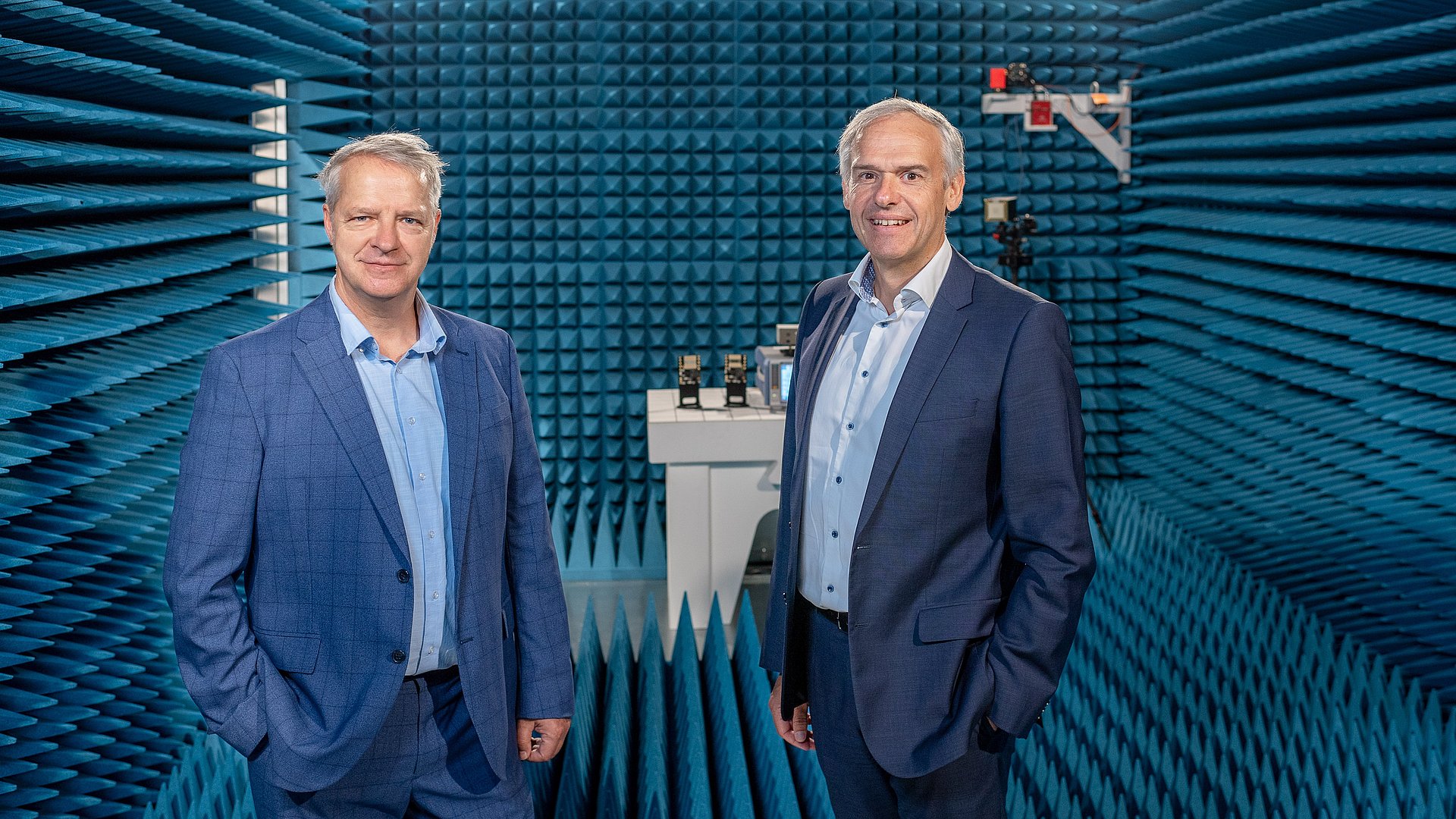
- The 6G Initiative Bavaria is part of the Hightech Agenda Plus of the Bavarian state government. The 6G Future Lab Bavaria project is funded by the Bavarian Ministry of Economic Affairs, Regional Development and Energy.
- The 6G-life project is a joint initiative of the Technical University of Dresden and TUM.
- The integrative project 6G-life is supported by the Federal Ministry for Education and Research under the program „Souverän. Digital. Vernetzt.“.
Technical University of Munich
Corporate Communications Center
- Julia Rinner
- presse@tum.de
- presse@tum.de
- Teamwebsite
Contacts to this article:
6G Future Lab Bavaria
Prof. Dr. Wolfgang Kellerer
Technical University of Munich (TUM)
Chair of Communication Networks
wolfgang.kellerer@tum.de
6G-life
Prof. Dr. Holger Boche
Technical University of Munich (TUM)
Chair of Theoretical Information Technology
holger.boche@tum.de
